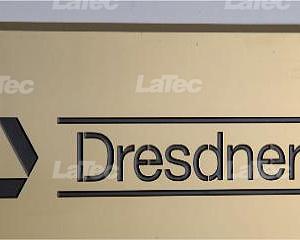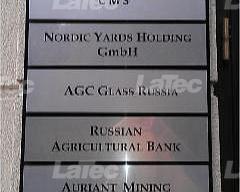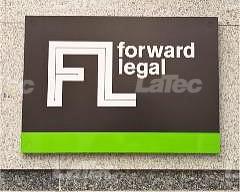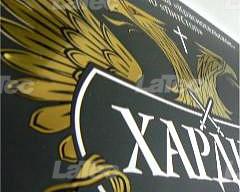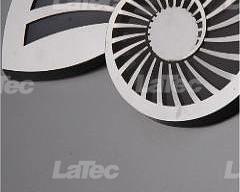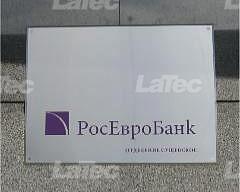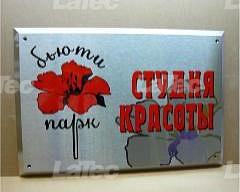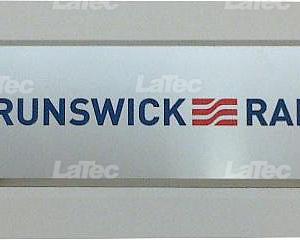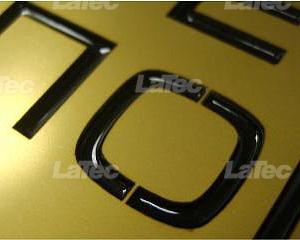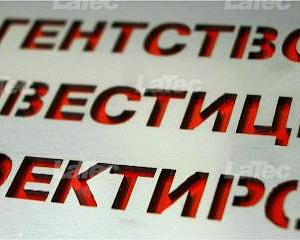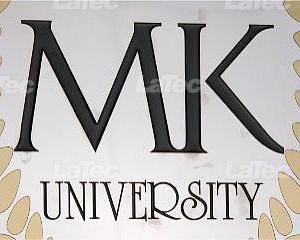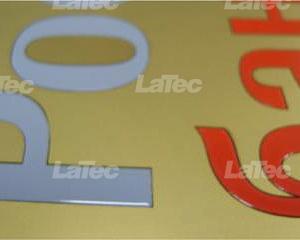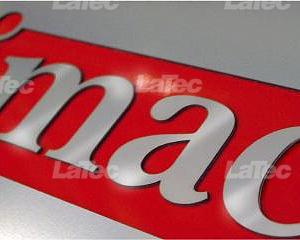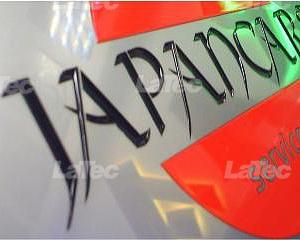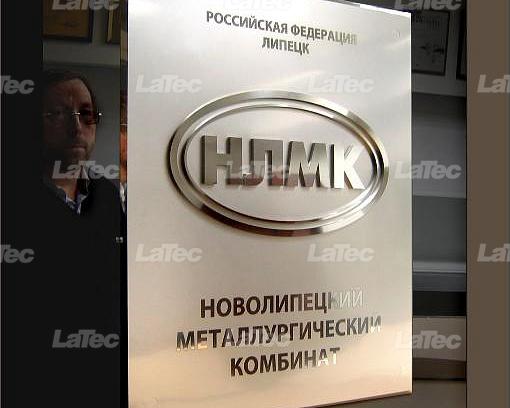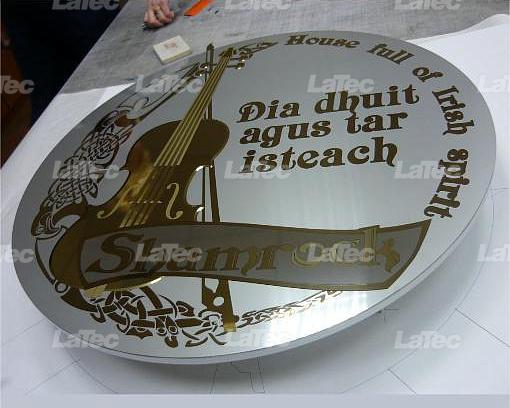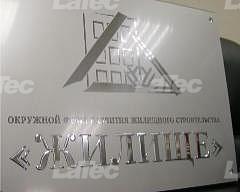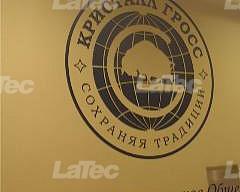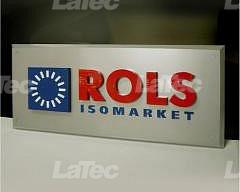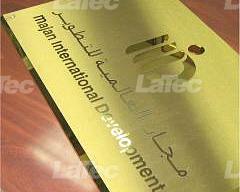Metal signs
Metal in metal inlayThis technology was developed by LaTec in 1994 and patented as "Method of making inlaid products" in 1998.
The core of the technology is the following: in slotted contours of letters and images of the front panel (cut by a high precision laser) other metal elements (identical in form) of a different color or texture can be glued. This process happens under certain pressure and temperature. Carved elements can be flat or molded to give volume. An inlaid image is assembled on a common basis of a future sign.
The advantages of this technology are in its durability and resistance to all types of atmospheric and mechanical effects. The disadvantages are complexity and cost, especially in the case of compound images with a large number of elements.
|
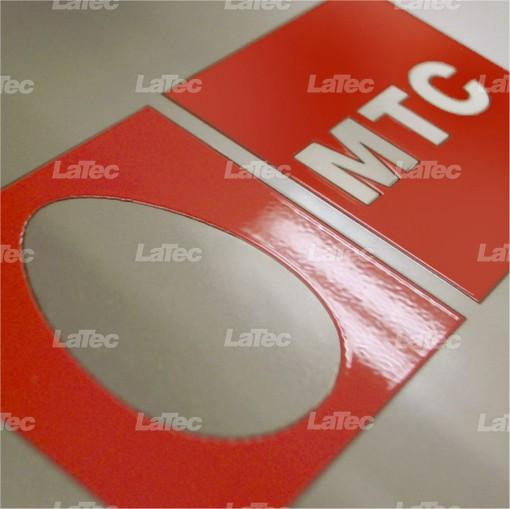
|
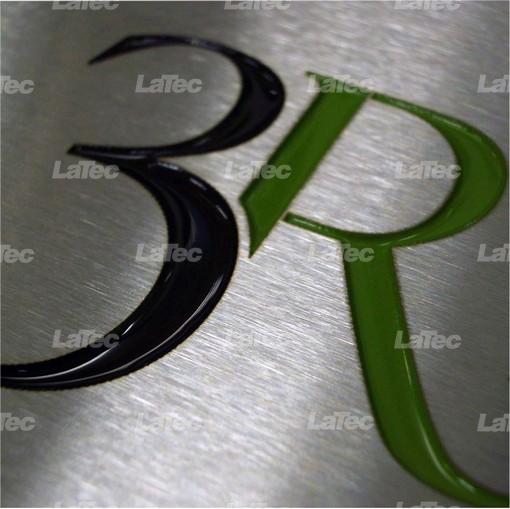
|
TopcoatingOne of the widely used technologies is a stylized classical sign of a thick plate of brass or steel. The core of the technology is a laser cut of a stainless steel face plate, bonding it under pressure and temperature with a metal base and the following painting of the image with specially mixed topcoats. In order to avoid the necessity to use a stencil font (jumper 0.5 mm) an additional inlay of a thin metal either with a pre-dye or post-shading is used. This technology is applied to a relatively small signs which are to be placed at a close distance and require gem quality and precision. |
Stainless Steel MoldingThe ductility and and bendability of stainless steel allows you to mold individual elements on a special press machine. The mold is also customized and laser cut. |
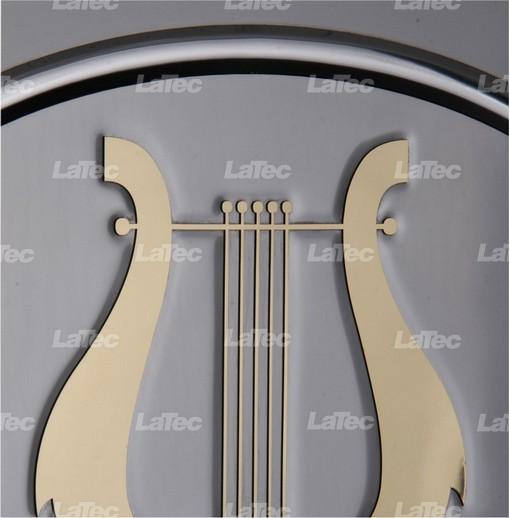
|
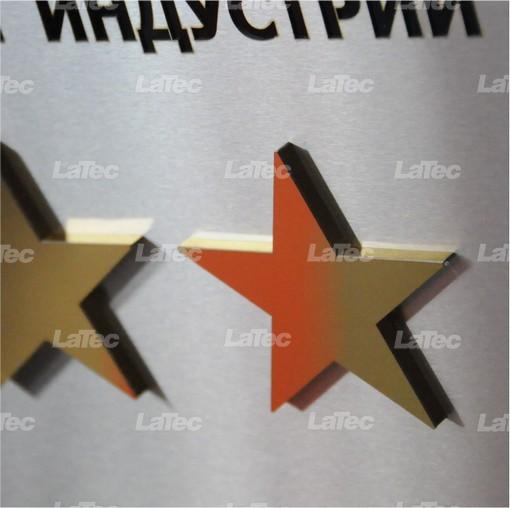
|
3D ElementsBased on the technology of three-dimensional letters and with the help of high precision of a laser beam focus (cutting width is about 0.1 mm) it became possible to collect sufficiently small 3d elements and accurately place them on a sign in the laser mounting points. |
